
As a 23-year-old graduate student in Middle America in the early 1970s, I was hungry for whateverI could learn about the Asian martial arts.
On the East Coast and West Coast, schools had been emerging and multiplying since the mid-1960s, but those of us who lived in “flyover country” had few opportunities to broaden our understanding of arts like karate, kung fu, judo and taekwondo.
At Union University in my hometown of Jackson, Tennessee, I’d been fortunate to train from 1969 to 1970 in the then little-known art of hapkido. In a field-house basement, a Korean student and former captain in the ROK Army known only as Mr. Suh organized and taught the system to a small group of dedicated students. Suh ran a nononsense traditional class, and for 10 months, we couldn’t get enough of his instruction. Despite the bruises and the blood, we always looked forward to our next session.
Fellow student Ivy Scarborough put it this way: “Mr. Suh was trained in an environment that was very much ‘real world’ and where survival was at stake. I am very glad we had the benefit of that mindset.”
When Suh unexpectedly returned to Korea in the fall of 1970, we were devastated. How could we continue our training? Kang Rhee had a taekwondo school in Memphis where Elvis Presley and Bill Wallace had studied, but that was 80 miles away. As a young man working his way through college, I could afford neither the time nor the tuition. Without an instructor, I turned to books, magazines (Black Belt being the primary one), television and movies to learn about any style I could find.
Around that time, a seminal movie appeared, and it compelled me to wrestle with some tough questions about my future. I ultimately wound up re-evaluating my career choice.
Cinematic Inspiration
Diese Geschichte stammt aus der December/January 2020-Ausgabe von Black Belt.
Starten Sie Ihre 7-tägige kostenlose Testversion von Magzter GOLD, um auf Tausende kuratierte Premium-Storys sowie über 8.000 Zeitschriften und Zeitungen zuzugreifen.
Bereits Abonnent ? Anmelden
Diese Geschichte stammt aus der December/January 2020-Ausgabe von Black Belt.
Starten Sie Ihre 7-tägige kostenlose Testversion von Magzter GOLD, um auf Tausende kuratierte Premium-Storys sowie über 8.000 Zeitschriften und Zeitungen zuzugreifen.
Bereits Abonnent? Anmelden
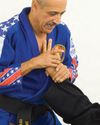
HOW TO CREATE A MARTIAL ART CASE STUDY: COMBAT HAPKIDO
On October 22, 2022, the International Combat Hapkido Federation celebrated its 30th anniversary. As you might expect, we're proud of our organization's longevity, stability and success.
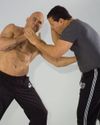
MARTIAL ARTS ANATOMY 101
PHYSIOLOGY OF THE LIVER SHO
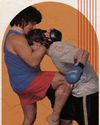
LOCK UP
THE CLINCHING LESSONS TAUGHT IN THE ANCIENT GREEK MARTIAL ART OF PANKRATION ARE STILL RELEVANT - AND EFFECTIVE!

KILLER CHARACTER ACTOR
When Scott Adkins Isn't Headlining His Own Action Movies Like \"Boyka: Undisputed,\" He's Stealing Scenes in Blockbusters Like \"John Wick\" and \"Ip Man\"!
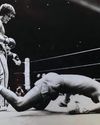
A DEEP DIVE WITH BENNY URQUIDEZ
Few fighters have a reputation as formidable and a record as impressive as Benny “The Jet” Urquidez. As you will see, his path from the traditional martial arts to full contact and then to kickboxing had more than its share of bumps.

PRE-EMPTIVE STRIKES: THE GOOD, THE BAD AND THE UGLY, PART 1
In my six previous columns, pre-emptive striking featured prominently.
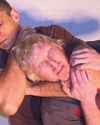
THE DAY JUJITSU DIED
Let us look at one historical instance that illuminates a lesson in task saturation, or what Miyamoto Musashi called \"sword flowers.\"

WHERE ARE THEY NOW? GUY MEZGER: FROM MMA FIGHTER TO HEALER
To be successful in mixed martial arts nowadays, you need an all-around game.

KILLER INSTINCT
It's not the size of the woman in the fight but the size of the fight in the woman.
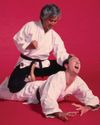
HAPKIDO'S BONG SOO HAN: THE MAKING OF A MARTIAL ARTS LEGEND
Much has been written about Bong Soo Han (1933-2007), his career as a hapkido master and his connection to the Billy Jack films.